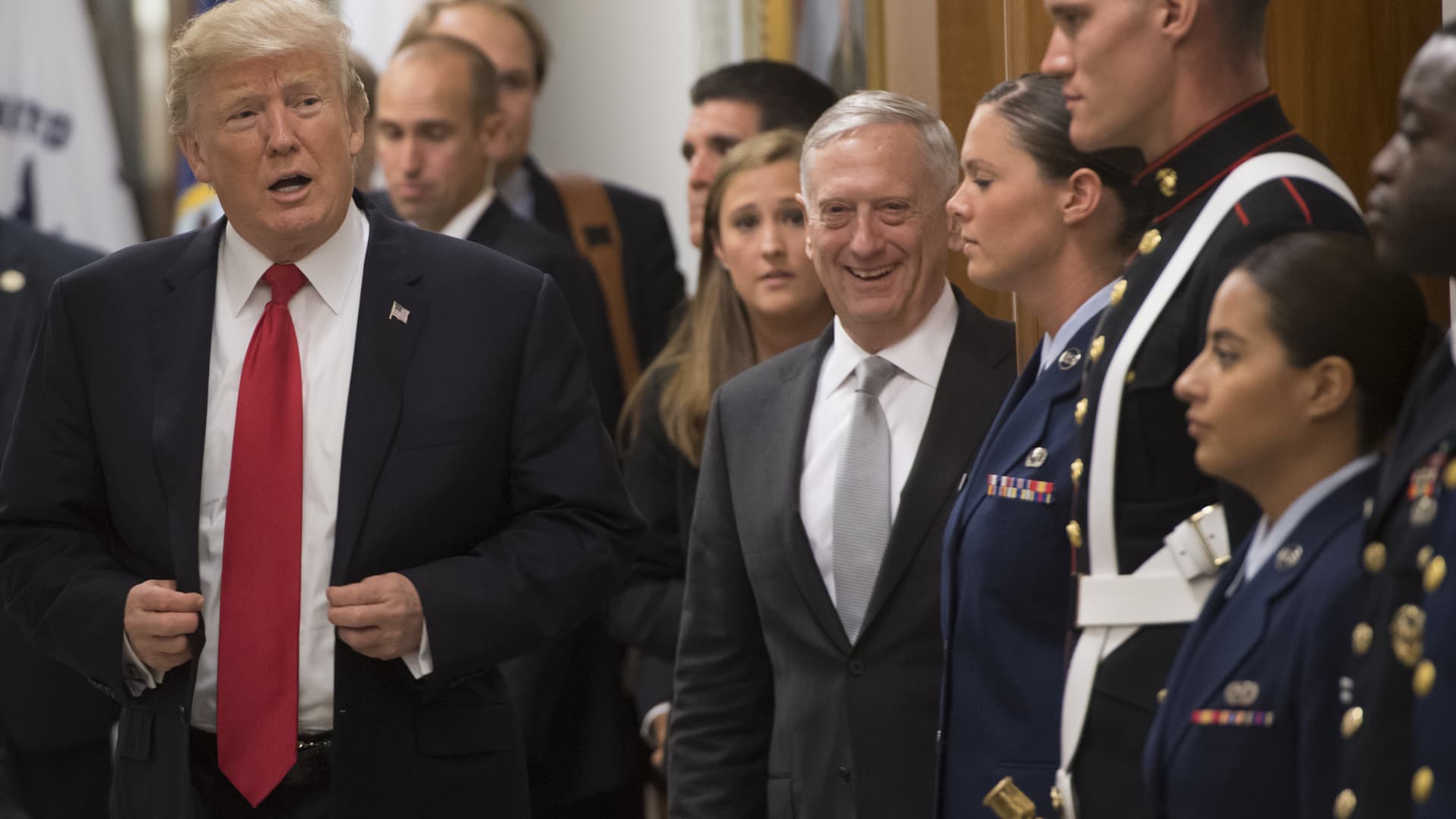Analyzing Trump's Stance On Transgender Service In The Military

Table of Contents
The 2017 Ban and its Justification
In July 2017, President Trump issued a series of tweets announcing a ban on transgender individuals serving in the military. This was followed by a formal memorandum, which effectively barred transgender individuals from serving openly, citing concerns about military readiness, healthcare costs, and combat effectiveness. The administration's stated justifications were largely based on unsubstantiated claims.
-
Burden on Military Readiness: The administration argued that the inclusion of transgender individuals would disrupt military readiness and unit cohesion. However, this claim lacked credible evidence, and numerous military leaders and experts countered that transgender service members posed no such threat.
-
Cost of Healthcare: The administration pointed to the cost of hormone therapy and gender-affirming surgeries as a significant burden on military healthcare resources. However, estimates of these costs were vague and often exaggerated, with no concrete data provided to support the claims. The actual costs were likely significantly less than suggested.
-
Combat Effectiveness: The administration asserted that transgender individuals would negatively impact combat effectiveness. This argument was widely criticized as discriminatory and based on unfounded prejudice, with no scientific evidence to support it.
Bullet Points:
- The administration failed to provide specific, verifiable cost estimates for transgender healthcare within the military.
- Numerous expert reports from medical professionals and military leaders contradicted the claims of negative impacts on readiness and combat effectiveness.
- At the time of the ban, the estimated number of openly transgender service members was relatively small, making the stated concerns seem disproportionate.
Legal Challenges and Court Battles
The Trump administration's ban faced immediate and widespread legal challenges. Numerous lawsuits were filed by transgender service members and LGBTQ+ advocacy groups, arguing that the ban violated the constitutional rights of transgender individuals to equal protection and due process.
Bullet Points:
- Key legal cases included Doe v. Trump and several others filed in various federal courts.
- Court rulings largely sided with the plaintiffs, finding the ban discriminatory and unconstitutional, emphasizing that it was based on unfounded assumptions and prejudice rather than legitimate military concerns.
- The legal battles significantly delayed and disrupted the lives of transgender service members who sought to serve openly and honorably.
The Biden Administration's Reversal
Upon taking office in 2021, President Biden swiftly reversed Trump's transgender military ban. This reversal reinstated the right of transgender individuals to serve openly in the military. The Biden administration implemented policies to ensure fair and equitable treatment of transgender service members.
Bullet Points:
- The Biden administration issued directives allowing transgender individuals to serve openly, regardless of gender identity.
- New policies focused on ensuring access to appropriate healthcare, including gender-affirming care.
- The reversal was met with widespread praise from LGBTQ+ rights groups and many military officials who recognized the importance of inclusivity and diversity within the armed forces. However, some opposition remains.
Long-Term Impacts and Ongoing Debates
The Trump-era ban and its subsequent reversal have left lasting impacts on the military and the transgender community. The ban created a climate of fear and uncertainty for transgender service members, potentially leading to a decrease in recruitment and retention. The reversal, while positive, doesn't erase the harm caused by the initial ban.
Bullet Points:
- The long-term effects on military morale and inclusivity are still being assessed. The initial ban likely negatively impacted trust and cohesion.
- Access to comprehensive healthcare, including gender-affirming care, remains a key area of ongoing discussion and policy development.
- The future of transgender inclusion in military policy hinges on ongoing dialogues, legislation, and the commitment to fostering a truly inclusive and equitable military.
Conclusion: Understanding Trump's Legacy on Transgender Military Service
Trump's stance on transgender service in the military remains a highly controversial and significant issue, highlighting the complex interplay between LGBTQ+ rights and national security. The ban, its legal challenges, and its eventual reversal underscore the importance of understanding the far-reaching consequences of discriminatory policies. It’s crucial to continue advocating for full inclusion and equal treatment of transgender individuals within the military and beyond. To learn more and support organizations working to achieve equality for LGBTQ+ individuals in the military and other sectors, please visit [link to relevant organization]. Understanding the nuances of transgender service and the ongoing debates surrounding military policy is vital for building a more just and equitable society.

Featured Posts
-
 Maha Influencer Selected For Us Surgeon General After White House Nomination Withdrawal
May 10, 2025
Maha Influencer Selected For Us Surgeon General After White House Nomination Withdrawal
May 10, 2025 -
 From Wolves Reject To European Champion His Rise To The Top
May 10, 2025
From Wolves Reject To European Champion His Rise To The Top
May 10, 2025 -
 Transgender Individuals And Trumps Policies A Community Perspective
May 10, 2025
Transgender Individuals And Trumps Policies A Community Perspective
May 10, 2025 -
 Nottingham Hospital Data Breach Over 90 Nhs Staff Accessed Victim Records
May 10, 2025
Nottingham Hospital Data Breach Over 90 Nhs Staff Accessed Victim Records
May 10, 2025 -
 Summer 2024 Travel Are You Real Id Compliant
May 10, 2025
Summer 2024 Travel Are You Real Id Compliant
May 10, 2025
